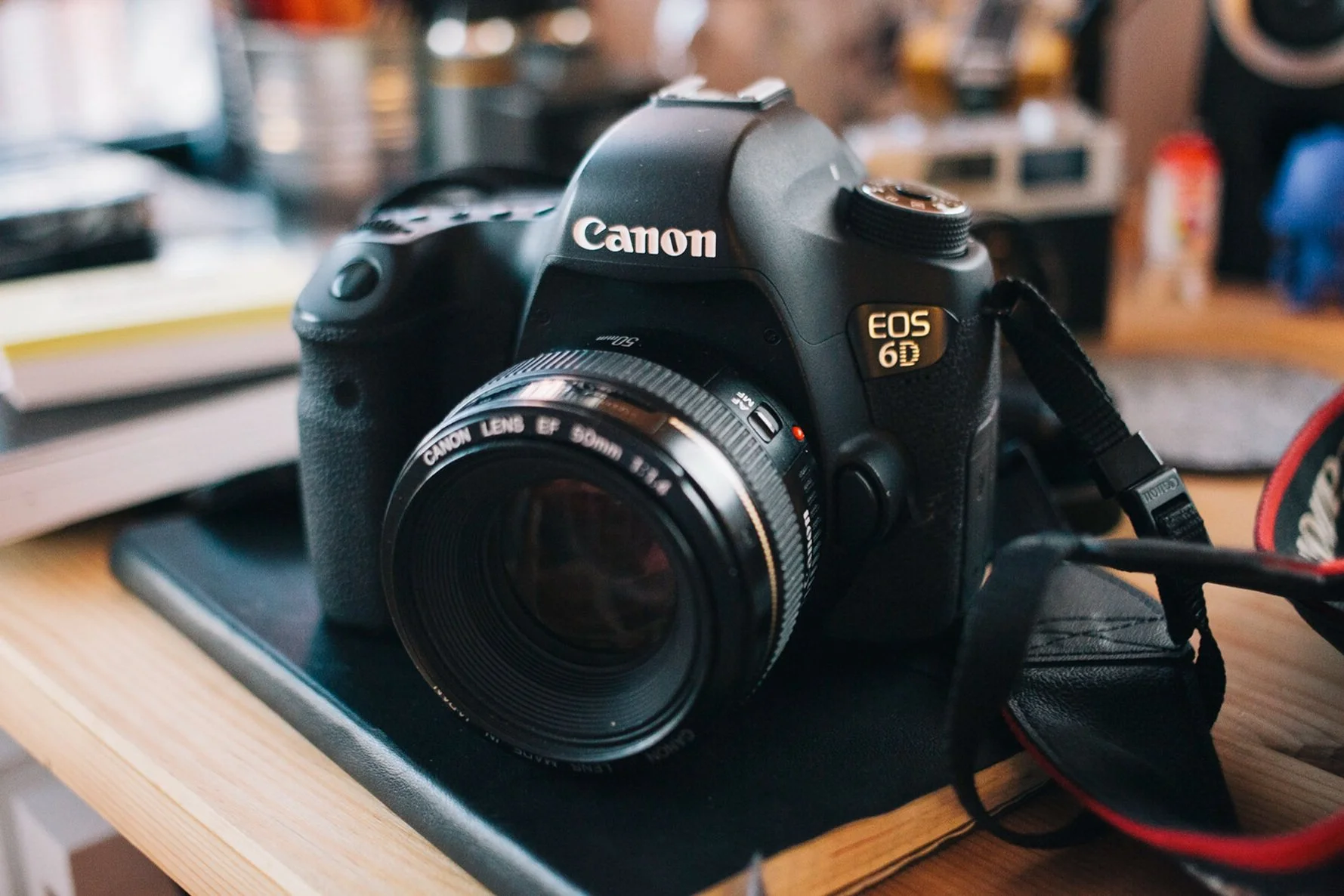Canon 6D Review
Photo above by Drew Rios
On September 17th, 2012, Canon released the Canon EOS 6D. It was an entry-level full-frame DSLR meant to compete with Nikon's latest entry-level full-frame offering, the D600. To say the 6D was met with mixed reviews would be an understatement. Unfortunately, the general consensus was that this was a shoddy 5D Mark III with its useful features removed; effectively making it a full-frame Rebel t4i. Enthusiast everywhere lamented over the removal of the rear joystick, single SD card slot, and pedestrian autofocus system. Conversely, the ladder couldn't help but be enticed at the opportunity to obtain Canon’s latest full-frame sensor, and class-leading consumer-grade video features, all in a smaller form factor and at lower price point.
Initially, I found myself agreeing with the general consensus, however over these last few years, my opinion has changed greatly. Below I've listed a bevy of pros and cons gathered throughout my extensive time with the 6D.
Cons.
Joystick: The lack of a joystick is honestly my biggest gripe regarding this camera. As someone who generally shoots portraits, I miss the practicality of an auto-focus joystick to make precise adjustments.
Autofocus System: The sheer number of focus points ( six), or lack thereof, is nothing short of deplorable. That in conjunction with the tight coverage is frustrating at times.
Dynamic Range: Consistently one of the weaker areas in Canon cameras, the 6D continues the trend. Fortunately, it’s a stop or so better than than the 5d iii.
Meh.
Viewfinder: In real-world use, I don't even notice it's only 97% coverage.
Autofocus Speed: Quick, snappy, and reliable for most people's needs, however, it’s effectively useless when trying to capture any fast/unpredictable motion( i.e. young children, sports).
Headphone Jack: The lack of a headphone jack isn't a deal-breaker for me personally. I utilize the audio levels in order to monitor sound, however when playing things back out in the field, I wouldn't mind having a headphone jack in order to make any necessary changes.
White Balance Button: I tend to shoot on auto white balance and make any corrections necessary in Adobe Lightroom, so the omission of a white balance button doesn’t bother me at all.
Pros.
Image quality: Utterly sublime. For me, it’s a near-perfect balance of resolution and lowlight performance. Believe it or not, it still holds up well in 2020. In fact, it is generally considered to be better than that of the flagship 5D Mark III.
Build Quality: Though it’s composed mainly of polycarbonate, as opposed to the 5D’s magnesium alloy, it still feels very robust. Nothing like the entry-level offerings which feel like recycled shampoo bottles. In addition, the camera is quite light, making it significantly less of a burden to lug around.
Video: Video autofocus is still terrible so I didn’t capture much, if any, video.
Final thoughts:
Understandably, upon release, the Canon 6D received an overwhelming amount of criticism. At a time where their competition appeared to be firing on all cylinders, with the release of the Nikon d600, and Sony a99, the general consensus was that Canon was attempting to repackage leftover camera components in order to capitalize on their current market dominance. When taking all that into consideration, no one expected that eight years later the 6D would dwarf its competitors combined sales, and go on to become “One of the 20 most important cameras of the decade”. As for myself, I can't say enough good things about this camera, with it quickly becoming one of my all time favorites. Additionally, currently on sale for roughly $500 (2019), this ( or either a D750 or A7ii) would be my recommendation those interested in getting into photography.


![canon-6d-body-only-[2]-1167-p.jpg](https://images.squarespace-cdn.com/content/v1/5e84de0189b05d023ed5c197/1587315036214-IK3N4ITNKWVFJLWLNOJ2/canon-6d-body-only-%5B2%5D-1167-p.jpg)
![canon-6d-body-only-[3]-1167-p.jpg](https://images.squarespace-cdn.com/content/v1/5e84de0189b05d023ed5c197/1587315036380-UL43NIDU1VU1E3FVGEVR/canon-6d-body-only-%5B3%5D-1167-p.jpg)








